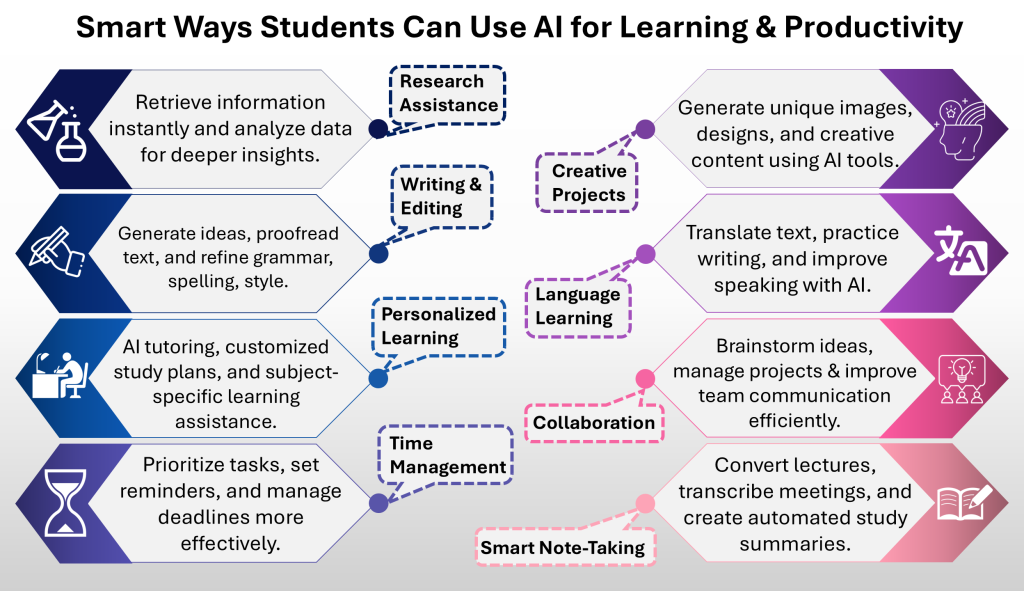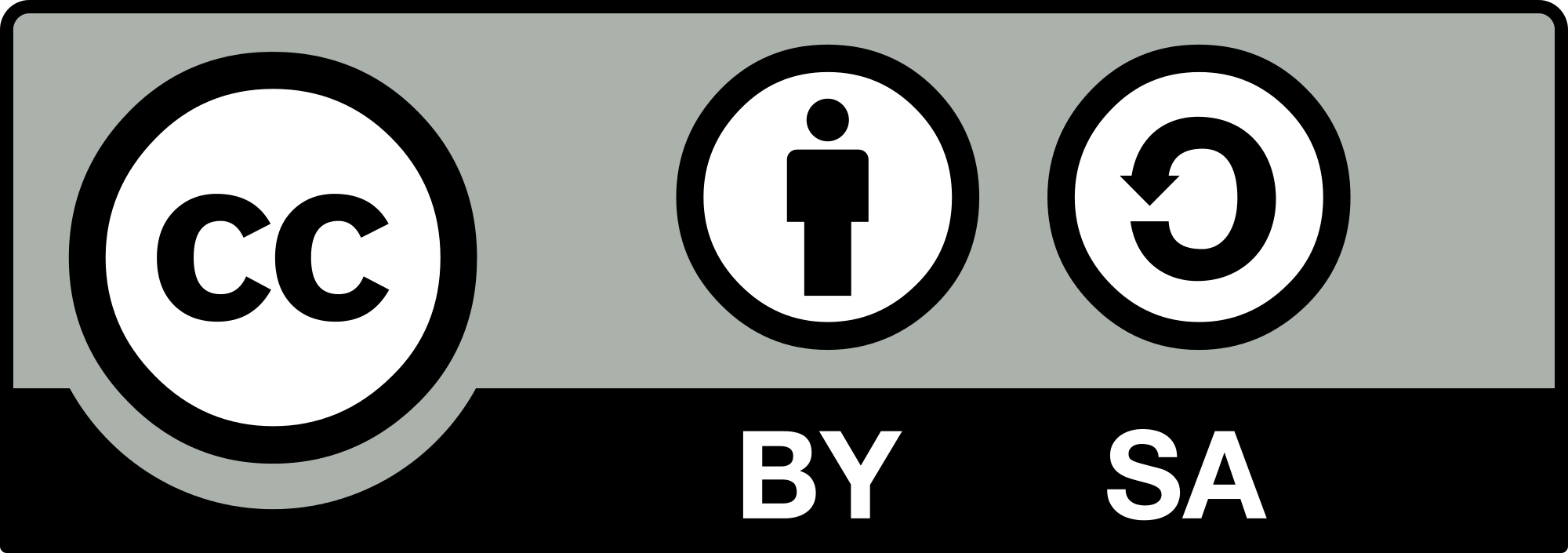Student Guidelines

Infographic created using Microsoft PowerPoint image tools.
Responsible Use of Generative AI for Students
Key Tips for Using Generative AI
- Check Course Requirements: Always refer to your course syllabus or consult with your instructor to determine if AI tools are permitted for your coursework. Each course may have different guidelines (University of Windsor, 2024).
- Maintain Academic Integrity: Do not copy and paste AI-generated content and claim it as your own. Always acknowledge when and how you have used AI tools in your work (University of Windsor, 2024).
- Protect Personal Information: Avoid including personal or sensitive information in AI prompts to prevent misuse and protect privacy (University of Windsor, 2024).
- Respect Copyright and Intellectual Property: Do not upload copyrighted materials or intellectual property to AI tools without explicit consent from the copyright owner (University of Windsor, 2024).
- Verify AI Outputs: Always verify the accuracy of AI-generated content by cross-referencing with reliable sources to avoid misinformation (University of Windsor, 2024).
- Use AI as an Assistant: Think of AI as a tool to assist your learning, not as a replacement for your own thinking and creativity (University of Windsor, 2024).
Other Important Considerations When Using Generative AI
AI Syllabus Statement: Instructors may include a statement in their course syllabi that outlines acceptable and unacceptable uses of generative AI. Unless explicitly prohibited, students can use these technologies for coursework. However, instructors may have different expectations, so it’s crucial to understand these requirements before using AI tools (University of Windsor, 2024).
Biases: Generative AI tools are trained on diverse data from the internet, which can include biases related to gender, culture, and language. While efforts are being made to reduce these biases, they can still persist. It’s important to be aware of these potential biases and verify any information provided by AI tools to avoid perpetuating inequality (University of Windsor, 2024).
Environmental Considerations: Training and running generative AI tools require a lot of resources, which contributes to increased energy and resource usage globally. Although companies like Google and Microsoft are working towards carbon neutrality, it’s essential to use AI tools judiciously to minimize environmental impact (University of Windsor, 2024).
Ethical Considerations: The ethical implications of using generative AI are still evolving. Concerns include biases, inaccurate outputs, environmental damage, use of copyrighted material, disinformation, and the impact on labor. It’s important to stay informed about these issues and use AI responsibly (University of Windsor, 2024).
For more detailed information, you can refer to the University of Windsor’s AI resource page Generative AI for Students | Artificial Intelligence (new tab).
References
Government of Canada. (Retrieved on December 19, 2024). Technical guide: Accessible artificial intelligence systems. Centre of Expertise on Accessible Information and Communication Technologies. Retrieved from https://accessible.canada.ca/centre-of-expertise/information-and-communication-technologies/technical-guide-accessible-artificial-intelligence-systems
University of Windsor. (Retrieved on December 19, 2024). Generative AI for students. Retrieved from https://www.uwindsor.ca/ai/305/generative-ai-students
Leddy Library. (Retrieved on December 19, 2024). Artificial intelligence and ChatGPT resources for students. Retrieved from https://leddy.uwindsor.ca/get-help/guides/artificial-intelligence-chatgpt-resources-students
Last Updated November 20, 2024
Creative Commons License

Artificial Intelligence in Higher Education © 2025 by Dr. Tranum Kaur, Ayah Malouhi, and Tasfia Tahiat is licensed under CC BY-SA 4.0

